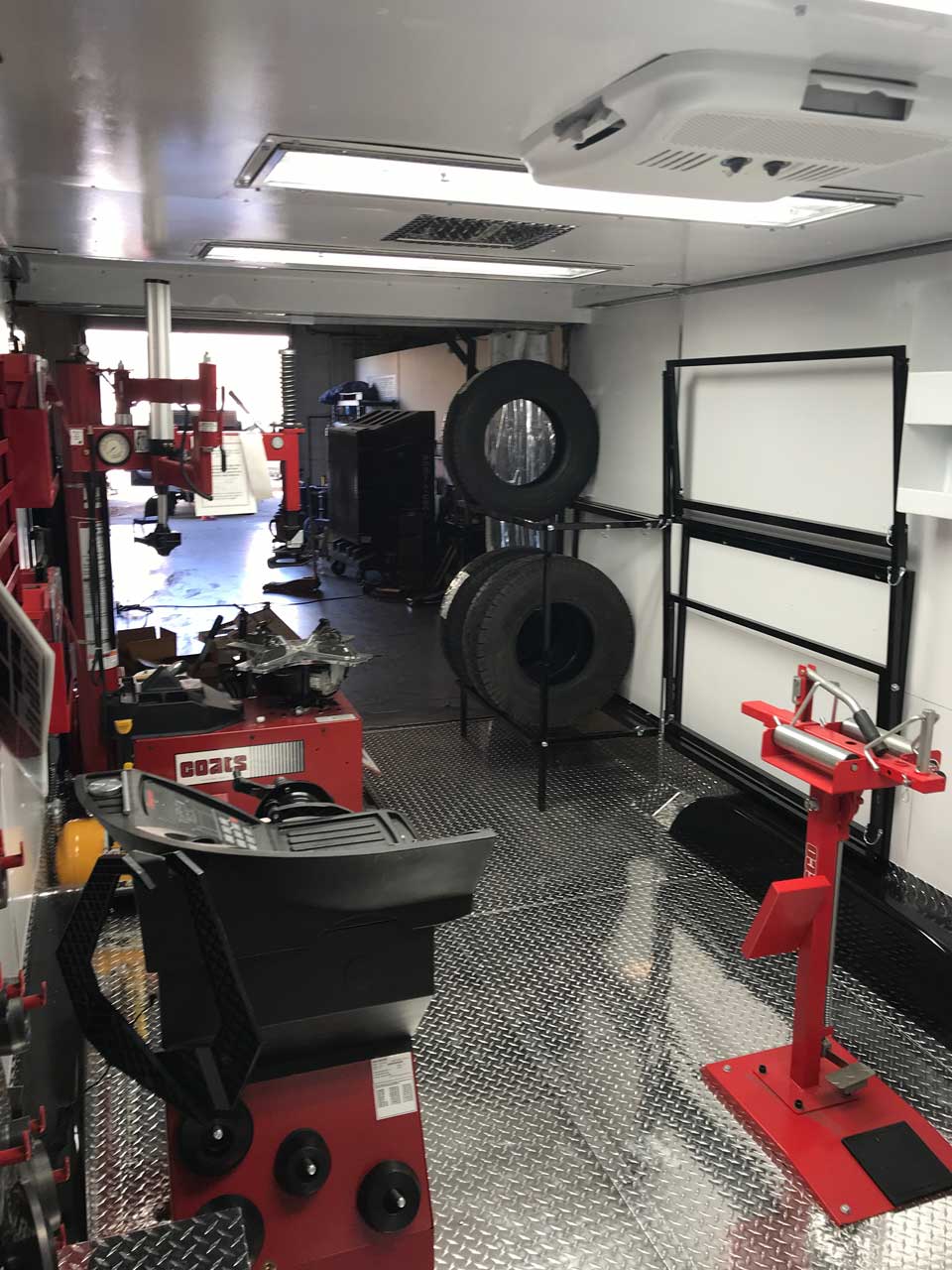Tire Service: Proven Techniques for Ideal Tire Upkeep and Treatment
Keeping optimal tire condition is vital for both security and performance of any kind of car. From guaranteeing proper tire pressure to regular turning and positioning, there are tried and tested techniques that can substantially prolong the lifespan of your tires and boost overall driving experience. As we explore the intricacies of tire treatment and maintenance, we will reveal essential standards that every car owner ought to abide by for the very best possible outcomes. Let's explore the world of tire solution and discover the secrets to keeping your tires in superior form for the lengthy haul.
Importance of Tire Stress
Sufficient tire pressure advertises better gas efficiency, as under-inflated tires can lead to boosted rolling resistance, causing the engine to function more difficult and consume even more fuel. Correct tire pressure ensures even step wear, boosting tire durability and saving cash in the lengthy run by delaying the need for early replacements. Routinely inspecting and changing tire stress, specifically previously long trips, is an easy yet effective method to enhance car performance, expand tire life expectancy, and prioritize safety on the road.
Tire Rotation Standards
When thinking about tire rotation standards, it is vital to understand the value of this maintenance job in optimizing tire life-span and preserving ideal vehicle performance. Tire turning involves changing the placement of each tire on a car to ensure also walk wear. Front tires often tend to use faster than back tires as a result of guiding pressures, making normal turning critical for balanced wear patterns. The suggested rotation pattern differs relying on whether a vehicle is front-wheel, rear-wheel, all-wheel, or 4x4. Typically, tires ought to be rotated every 5,000 to 7,500 miles, or as suggested in the vehicle guidebook. Neglecting tire rotation can bring about uneven wear, influencing handling, traction, and possibly compromising lorry safety. By adhering to proper turning standards, chauffeurs can extend the life of their tires, enhance gas effectiveness, and boost total driving experience. Normal turning is a simple yet effective maintenance method that adds significantly to tire durability and car efficiency.

Advantages of Wheel Alignment
Guaranteeing proper wheel positioning after tire rotation is crucial for keeping well balanced wear patterns and optimizing automobile performance. In addition, right wheel alignment assists to expand the life expectancy of your tires. Misaligned wheels can trigger unequal tire wear, leading to premature tire replacement and boosted upkeep costs.

Tire Footstep Depth Examine
Carrying out a regular inspection of tire step depth is necessary for maintaining risk-free driving conditions and prolonging the lifespan of your tires. The tread on your tires plays a vital function in providing traction, specifically in slippery or damp problems. To inspect your tire tread depth, you can utilize a step deepness scale or the cent test. The suggested walk deepness is at least 2/32 of an inch. It is time to replace your tires to guarantee optimal performance and security on the road if the tread deepness is below this threshold. Unequal step published here wear can suggest problems with tire suspension, positioning, or pressure, highlighting the value of regular step depth checks. Overlooking to check and keep proper step depth can cause reduced grasp, longer stopping ranges, and an increased threat of hydroplaning. By integrating tire tread deepness explore your regular upkeep routine, you can drive with self-confidence knowing that your tires are in leading condition.
Seasonal Tire Examination
Seasonal tire inspection is a basic facet of tire upkeep that ensures tires are ready to deal with the obstacles positioned by different weather condition conditions. In prep work for winter months, it is necessary to inspect the tire stress on a regular basis as chilly temperature levels can create tire stress to drop. By performing regular seasonal tire examinations, chauffeurs can prolong tire life expectancy, boost gas efficiency, and most significantly, make certain a protected driving experience in differing weather condition problems.
Final Thought
Finally, preserving proper tire pressure, revolving tires on a regular basis, aligning wheels properly, checking step depth, and performing seasonal inspections are important practices for optimal tire care. By complying with these shown approaches, chauffeurs can guarantee their tires last much longer, carry out better, and add to total automobile security. It is very important to focus on tire maintenance to stop crashes, enhance gas browse around these guys efficiency, and prolong the life-span of tires.
Adequate tire pressure advertises much better fuel efficiency, as under-inflated tires can lead to enhanced rolling resistance, creating the engine to function tougher and eat more gas.When taking into consideration tire turning standards, it is vital to understand the relevance of this upkeep job in making best use of tire life expectancy and maintaining ideal car performance. Seasonal tire examination is an essential facet of tire upkeep that ensures tires are ready to face the obstacles posed by different climate problems. By carrying out routine seasonal tire examinations, chauffeurs can lengthen tire lifespan, improve gas this article effectiveness, and most significantly, ensure a secure driving experience in varying climate problems.
In final thought, keeping proper tire stress, rotating tires frequently, aligning wheels correctly, keeping an eye on step depth, and conducting seasonal assessments are crucial practices for optimum tire care.